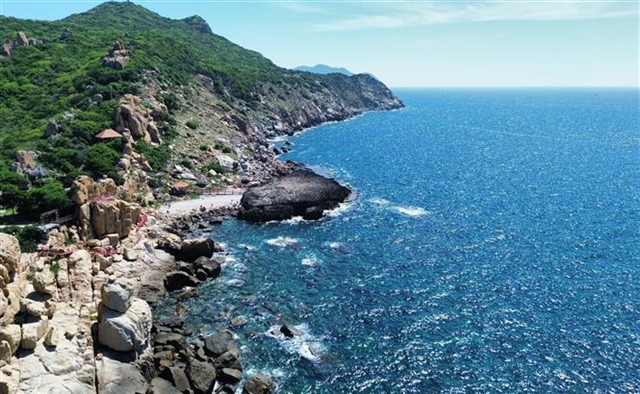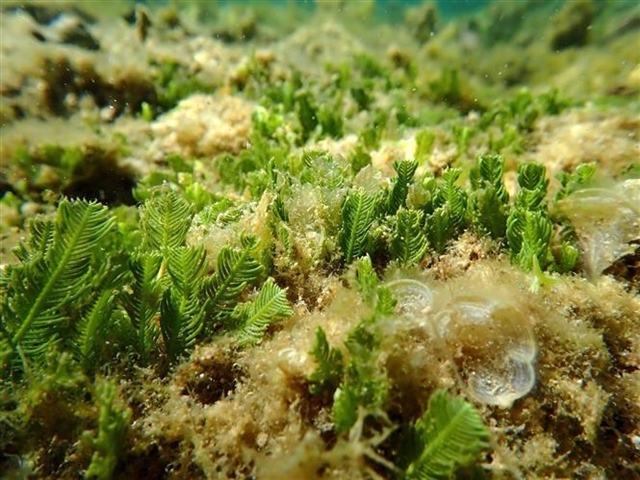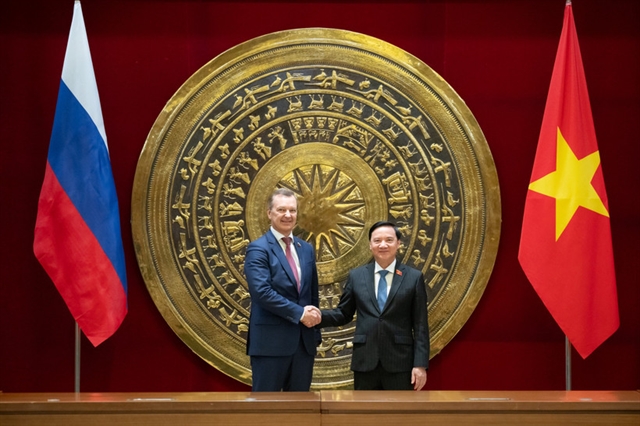 Environment
Environment

 |
| A corner of the Marine Protected Area in Núi Chúa National Park in Ninh Hải District, Ninh Thuận Province. VNA/VNS Photo Nguyễn Thành |
HÀ NỘI – Deputy Prime Minister Trần Hồng Hà has approved a project to expand and establish new marine protected areas, fishery resource conservation zones and marine ecosystem restoration areas by 2030, aiming to increase the area of marine and coastal protected zones to 6 per cent of Việt Nam's natural marine area by 2030.
According to Decision No 1539/QĐ-TTg, the project aims to effectively manage and protect marine, coastal and island ecosystems, increase the area of marine protected zones and contribute to biodiversity conservation.
It also aims to proactively respond to climate change and rising sea levels as well as develop a sustainable marine economy in conjunction with ensuring national defence, security, independence, sovereignty and territorial integrity, striving to make Việt Nam a strong maritime nation.
Under the project, 27 marine protected areas covering over 442,230 hectares will be established, expanded and effectively managed. This effort will increase the total area of marine protected zones to approximately 0.5 per cent of Việt Nam's natural marine area.
It seeks to effectively manage 59 fishery resource conservation zones and 63 temporary no-fishing zones in marine areas. These measures are designed to protect spawning grounds and habitats for juvenile aquatic species, ensuring that conservation zones cover over 2.5 per cent of Việt Nam's natural marine area.
The project will establish and put into operation areas where effective conservation measures are applied, covering approximately 0.5 per cent of the marine area. It also aims to expand the areas designated for marine ecosystem restoration, covering approximately 1 per cent of the total marine area.
Efforts to expand, establish and effectively manage Ramsar sites, wetland conservation zones and important coastal wetlands will also be included. The total area of these zones is expected to account for approximately 1.5 per cent of the country’s natural marine area.
Six key tasks
To achieve these objectives, Deputy PM Hà emphasised six key tasks and four ways to implement them.
The first task is to adjust and expand the areas of existing marine protected areas, Ramsar sites and coastal wetland conservation zones in line with approved plans.
Next, the second task is to establish new and expand the current networks of marine protected areas, Ramsar sites and coastal wetland conservation zones, also following approved plans.
The third mission involves developing regulations and organising the management of areas where other effective conservation measures are applied in Việt Nam's marine regions.
Meanwhile, the fourth task is to restore key marine ecosystems such as coral reefs, seagrass beds and mangrove forests to enhance biodiversity and ecosystem resilience.
The fifth focuses on the effective management of marine protected areas, Ramsar sites, coastal wetland conservation zones, fishery resource conservation zones, temporary no-fishing zones, important coastal wetlands and areas applying other effective conservation measures.
Finally, the sixth task is to integrate comprehensive data on marine biodiversity, fishery resources, environmental policies and management models into Việt Nam’s national databases on marine and island management. This will ensure coordinated and efficient conservation and restoration efforts.
 |
| The seaweed and seagrass ecosystems in the Marine Protected Area of Núi Chúa National Park. |
Deputy PM Hà emphasised four ways to help implement the project.
The first is promoting communication campaigns and capacity-building initiatives to raise awareness and improve skills related to the conservation, protection and restoration of marine ecosystems.
Another solution involves conducting research to identify potential areas for applying effective conservation measures, restoring degraded ecosystems such as coral reefs, seagrass beds and mangroves, and evaluating the effectiveness of conservation and restoration efforts from 2021 to 2030.
The third way is to develop mechanisms for payment for ecosystem services in marine protected areas and evaluate the carbon storage potential of key marine ecosystems to support sustainable economic development and environmental protection.
Finally, the fourth solution focuses on applying geographic information systems (GIS) and remote sensing technology for managing marine ecosystems. Efforts will also be made to control waste and pollution sources in marine areas designated for conservation, protection and restoration.
The Ministry of Agriculture and Rural Development will take the lead, working in coordination with relevant ministries, agencies and local governments to ensure the effective implementation of the project.
The Ministry of Natural Resources and Environment will guide local authorities in establishing and managing coastal wetland conservation zones, Ramsar sites and important coastal wetlands.
The Ministry of Planning and Investment will take responsibility for proposing and reporting to authorities on State budget allocations for medium-term and annual public investment plans to finance the projects, in accordance with the Public Investment Law.
Việt Nam has established 16 national marine protected areas within the coastal waters of 12 localities. These areas are primarily concentrated in near-shore regions, with the farthest being the Nam Yết Marine Protected Area in Trường Sa Island District in Khánh Hòa Province.
In the Gulf of Tonkin, the farthest offshore marine protected area is the Bạch Long Vĩ Marine Protected Area. Collectively, these marine protected areas cover approximately 0.24 per cent of Việt Nam's marine area.
Out of the 16 marine protected areas included in the national plans, 11 have established management boards. These include the marine protected areas of Cát Bà, Bạch Long Vĩ, Cồn Cỏ, Cù Lao Chàm, Lý Sơn, Nha Trang Bay, Núi Chúa, Hòn Cau, Côn Đảo and Phú Quốc. – VNS




